The Panel of Experts from Ask the Trail Sisters answer your questions!
Learn more about the panelists and ask a question!
I enjoy adventuring on the trails (both hiking and running) but am always doing it solo. What do you do to keep yourself safe, or what precautions do you take?
If you’re going solo by default and would like to venture out with others sometimes, then you’re in the perfect place to connect with like-minded adventurers. And if solo outings are simply your jam, some suggestions for staying safe are to not run with earbuds, or only run with one bud in and at a lower volume so that you’re aware of your surroundings at all times. Know where you’re going; plan your route, stick to it, and let someone know those plans along with your return ETA. Carry a whistle, spray, other repellents you feel comfortable using. Take a self-defense class as well as outdoor safety training (check with area park rangers) so that you’re aware of any creatures sharing the space with you and what to do should you encounter them.
Let someone know where you’re going, when you’re supposed to get back, and what to do if you don’t return. Carry a phone and/or satellite beacon (PLB). Stick to trails and routes you know. Use good judgment and listen to your gut.
I was part of a discussion in my running club about this safety topic recently. We talked about the pros and cons of a few safety devices such as a handheld safety alarm, a simple emergency whistle (many backpacks come with one integrated or attached already), handheld pepper spray, and also about location/communication devices such as satellite trackers if you’re running somewhere with bad or no cell service, running with your phone on you, and the good ol’ fashioned advice to always tell someone where you’re going and when you plan to be back.
We also talked about the importance of carrying a very minimal few first-aid essentials in your pack or pocket. The basics that I like to carry are: a small emergency headlamp, small tube of chapstick with SPF that also serves as sunscreen and lube, and then I wrap some cloth tape around it which will work as blister protection or a bandage, I also carry a couple of small individually wrapped pieces of gauze in case I have a bloody fall, and in the winter I’ll carry a sealed packet of hand warmers, an extra BUFF and a survival blanket. What exactly you choose to carry is a personal preference but I would definitely recommend thinking strategically about simple pieces of gear you can carry easily that can help you out in a pinch.
Trail adventures are great solo, but you’re right, it pays to be safe. It’s just as easy to lose your way or sustain an injury on a short technical trail as some of the longer runs. I keep a basic first aid kit in my running pack, as well as a pocket knife. Trail running by its very nature puts us at a higher risk for minor accidents. I have paid for a subscription to Gaia GPS, because it works offline and can show me where I’m going if I’m in a new area. That being said, if I’m in a new area, I do my research first, and make sure I have a good sense of the trail so I can tell if something seems “off”. I always let someone know where I’m going and roughly when I would expect to be back. I didn’t use to do this, but had an adventure go wrong a few years ago, and even though I made it out just fine, I realized what a vulnerable position I put myself in by not being specific. For longer/backcountry runs, I use a Garmin InReach beacon, always take extra layers, calories, backup battery, and headlamp.
If I have to run solo, I never run in the dark and my husband always knows where I’m headed and about how long I’ll be gone. I also bring along a cell phone that is fully charged. Some runners will carry weapons or mace, but I would caution runners carrying mace to always be aware of which way the container is facing. A friend of mine in high school once sprayed herself inadvertently while we were out for a run! And as a rule, I never listen to music while running. I enjoy listening to nature on my runs but also listen constantly for the sounds of others on the trail, as well as vehicles on my way to and from the trail. As for wildlife, my “biggest” concern here is probably skunks. Running during the day mostly addresses that concern. Runners who run trails that may host the occasional bear or cougar might carry whistles, bear bells, or bear spray as a precaution.
I would buy a spot tracker (the mini is perfect). Always bring maps, have a backup (or bailout plan), and ALWAYS tell someone where you are going for that day/adventure. Be sure to bring layers, a water filter, and plenty of snacks!
Situational awareness. This starts before my adventures – I often take myself through various scenarios that could occur on a run (a fall, animal encounters, weird human encounters, a sudden storm, etc.) that way I’ll immediately know what to do if danger occurs, avoid panic state, and my reaction time will be quicker. I love zoning out on a meditative run, but I actively practice continually assessing and processing my surroundings (google the OODA loop for some guidance here), and then creating new plans of action. This is super helpful in races as well – when the danger might not come from being out solo, but the various issues that could occur and attempt to derail my race.
When I’m out on the trails, I am almost always running without music. Being aware of your surroundings is a key part of staying safe. I will also let someone know where I am headed and when they might expect me back, have my phone along if I need to call for help, and sometimes even have a GPS tracker on me. Respect the trails and be prepared, but don’t let fear keep you from exploring.
I always tell my husband where I’m going, and at times, will make him look at the map so he has an actual visual. I have a Garmin inReach, and will always take that with me, especially when I’m in explore mode or adventure in precarious areas. As the Training Director for my local Search and Rescue organization, I can tell you that location devices are the number one item that can make a difference between life and death for a lost/injured subject. Of course, carrying the 10 essentials is also extremely important, but if help is able to have a lock on your location, it’s a game-changer. Not everyone can afford an inReach or Spot, but even turning on the tracker in your iPhone (you do this in your Contacts with someone you want to be able to see your location) is helpful.
As for other precautions, it depends on your surrounding…are you in an urban area or the mountains? Each area may require different considerations. I don’t carry pepper spray in the mountains, but I may want to in an urban area. If adventuring in the mountains, go early to avoid storms (generally a mid-day issue), but if adventuring in an urban area, I’d probably go mid-day when more people are around and can help if I get in a predicament. Though I love music, I will only listen with one earbud in, or will keep it super low so that I can hear my surroundings.
I love to bring one of our dogs with me on training runs — it’s good for them and makes me feel a little safer. I always tell my husband exactly where I am running, and he uses the Strava Beacon feature if I am running solo. And I listen to my intuition. Once I was running solo on the AT and saw a person ahead of me on the trail, who was walking slowly. Something about the location, time of day, and what he was wearing told me that he wasn’t a hiker, so I turned around and cut my run short. I had no regrets and ended up with a great alternative run without the stress!
I could write a whole essay on this! I love solo adventuring on the trails but am mindful of safety & emergencies. If you will be somewhere remote, be sure to let someone know your itinerary. I always carry a headlamp, first aid kit, folding knife, and water with me for hikes. I also make sure to have a map of the route on my phone, downloaded for offline use in case I lose reception. If I’m worried about stranger danger or wildlife, pepper spray might not be a bad idea. I highly recommend having a Road ID bracelet with emergency contacts listed. Lastly, just be aware of your surroundings and travel the trails with confidence!
Such a big topic in our community in Asheville! To be honest, I carry no gear that one would think they’d need in terms of a situation with a human predator, as I just don’t trust myself enough to be able to act quickly enough with it. I keep my eyes on everything around me, even looking back fairly often. I let someone know where I am going, my route, my start time, and ETA finish, and call them as quickly as able upon finishing. If I come up on a person, I will pull out my car key and keep in my hands. I wear bright colors, as we’re in a high hunting area. I don’t wear music. I am aware of animal tracks and what happens if I encounter an animal (bear, venomous snake, etc.). I am soon getting WFA certified to help my journey here.
First of all I tell someone where I’ll be running/hiking. I also bring my pack with water, food and a jacket. I like to listen to music so I wear Aftershokz open ear headphones so that I can still hear my surroundings.
I let my hubby and friends know where I’ll be and I stick to trails I know like the back of my hand. Obviously, I take my phone and don’t listen to music to stay aware of my surroundings.
ALWAYS, ALWAYS, ALWAYS let a few close friends/family know where you are going and ETA of when you think you should be back to your car or get into phone service. I would recommend taking a Wilderness First Aid course so you have a little more knowledge of how to help yourself if something unexpected happens and you can’t get immediate help. Use common sense and be aware of your surroundings. I don’t like to listen to music when I am running solo so that I can be aware of what is happening around me. Carrying a little knife or pepper spray and having it accessible from your pack can help ease your mind. Have confidence and have fun! You are stronger than you know!
I do solo hiking and running all the time, especially this past summer with Covid-19, where I hiked 14ers and ran many trails solo. I was worried about going by myself if the area was new to me, but I actually really enjoyed it. I recommend that you check trail conditions, mountain weather, and difficulty (the technical level, elevation gain, etc.). If you are not familiar with the particular area, make sure to study the location of the trailhead, trail description-especially trail splits or false summits. You should have extra water (or a filter), food, and layers just in case. Knowing what to do when you run into animals is always helpful too. Trying to make friendly conversations with other hikers and runners along the way is always helpful and fun.
This is a tough one because my first instinct is: find your local Trail Sisters Community so you have options!
Due to our current situation, more of us are forced to run/hike trails alone. What a great time to gain confidence in ourselves out in nature!!!
In order to feel safe I carry pepper spray and a folding knife with me, and my cell. I also opted to take a self-defense class to learn how to defend myself. I carry a hard copy map with me since cell batteries don’t last forever. I tend to stay on trails that I’m familiar with. I let “my person” (partner, friend, parents) know where I am going and my expected time to finish. I will send a text when I start and a text/phone call when I’m done.
I never wear headphones or listen to music when I’m running/hiking alone. This is for a variety of reasons: wildlife, weather, and weirdos (thanks, Trail Sisters retreat, for listing this during one of our talks). There are now great headphone options that don’t go in your ears like Aftershokz and Jaybird. The innovative design makes it easier to hear if you absolutely must have music. But consider being in nature, its own wonderful symphony of sound too!
As ladies, we do have a good gut instinct. Listen to your gut instinct. It’s telling you something. If you start feeling off, turn around or stop and look around. Maybe it’s an animal nearby or another trail user. It could be nothing. But pay attention to that feeling.



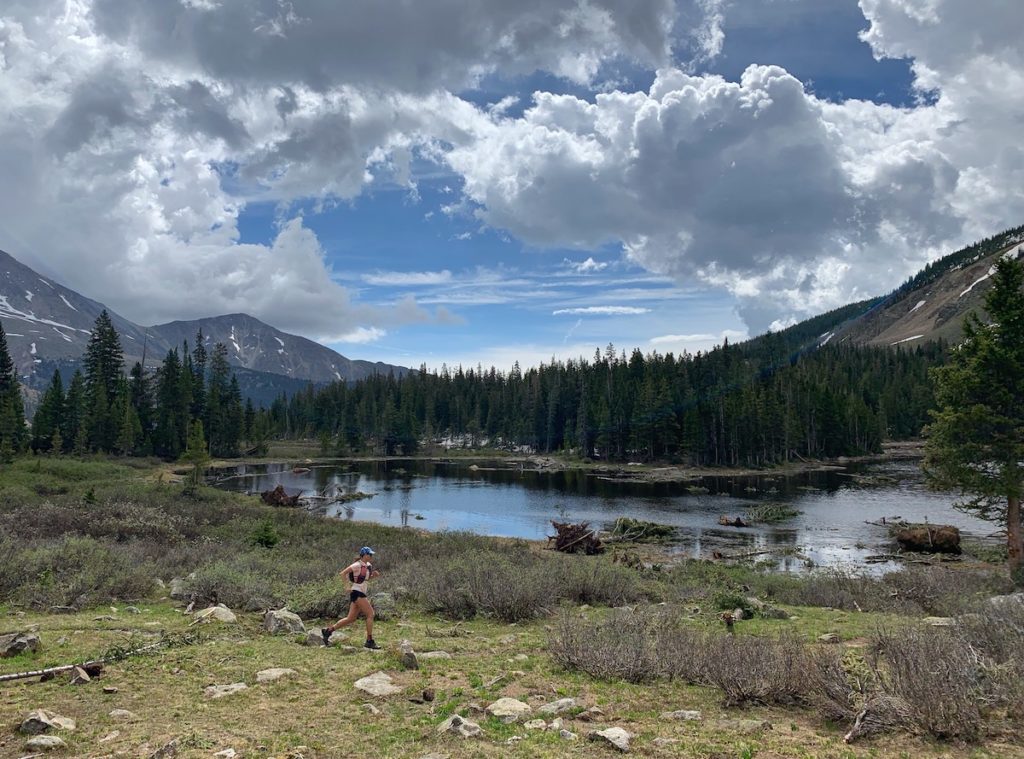
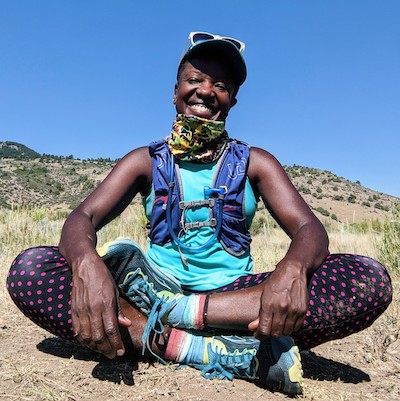

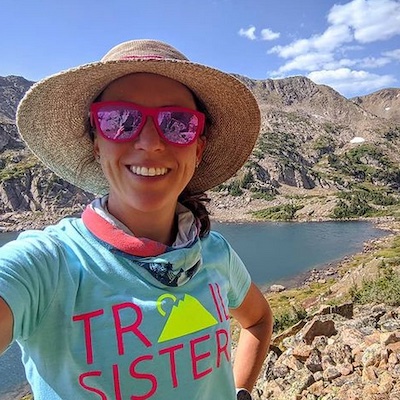
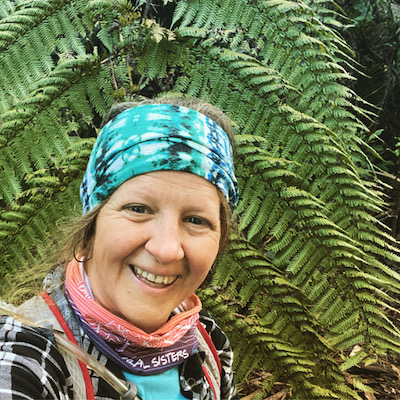

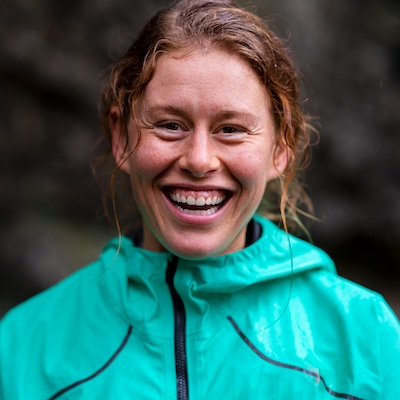

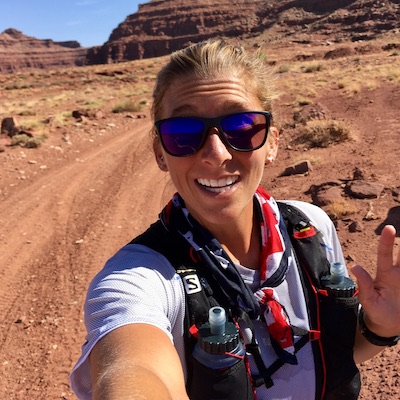
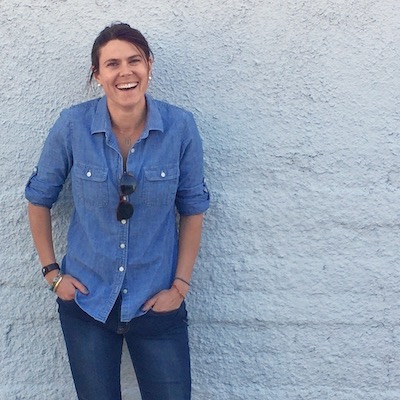


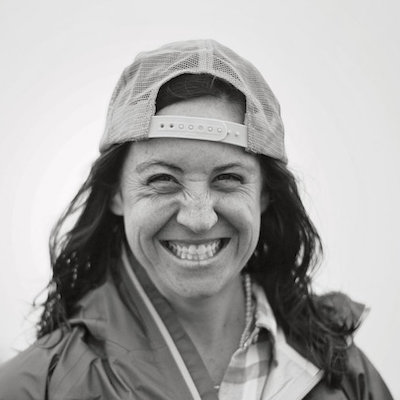

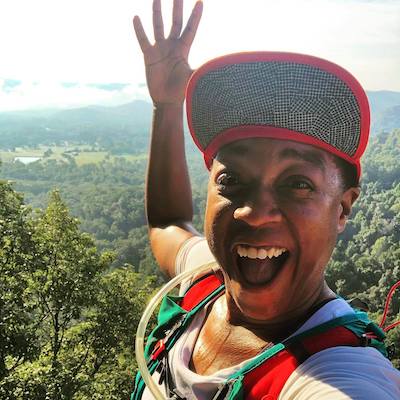


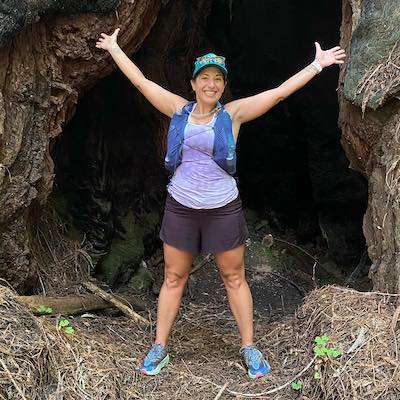











One Response
One of my must-haves is a paper map. I can’t count on consistent GPS here in Maine and six months out of the year it’s cold enough to seriously shorten the life of your phone battery, so downloaded maps can become inaccessible by the end of a run. I put them in a zipper snack baggie that I recycle for the purpose. They don’t add significant weight or bulk to my pack, but they can be literally lifesaving when you need them.